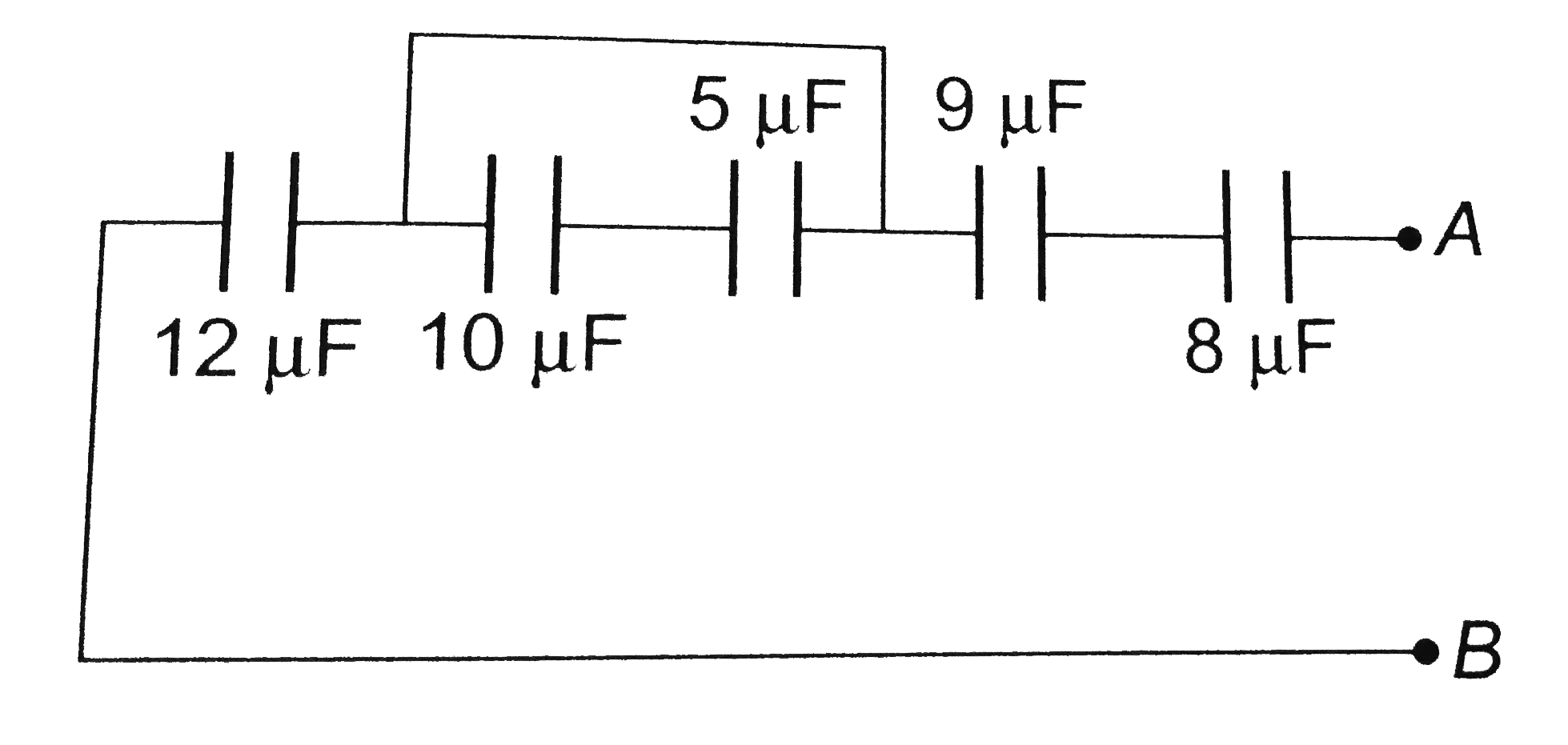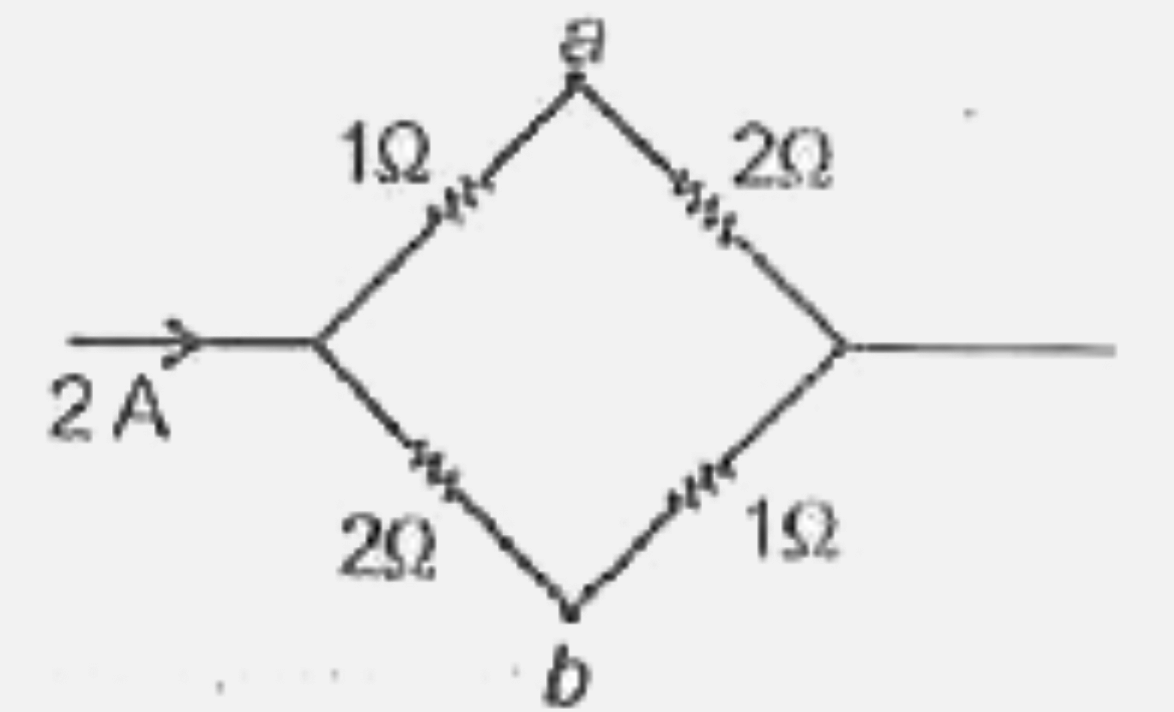Positive and negative charges of 1μC each are placed at two points as shown in the figure. Find the potential difference between A and B

The correct Answer is:3000 volt
VA=KQ2−KQ3VB=KQ3−KQ2VA−VB=2(KQ2−KQ3)
=9×109×10−6(1−23)=3000 volt
Topper's Solved these Questions
- MISCELLANEOUSBOOK - ALLENCHAPTER - MISCELLANEOUSEXERCISE - Exersice-04[B]
16 Videos
- MISCELLANEOUSBOOK - ALLENCHAPTER - MISCELLANEOUSEXERCISE - Exercise-05(A)
35 Videos
- MISCELLANEOUSBOOK - ALLENCHAPTER - MISCELLANEOUSEXERCISE - Comprehension 9
2 Videos
- KINEMATICS (MOTION ALONG A STRAIGHT LINE AND MOTION IN A PLANE)BOOK - ALLENCHAPTER - KINEMATICS (MOTION ALONG A STRAIGHT LINE AND MOTION IN A PLANE)EXERCISE - BEGINNER S BOX-7
8 Videos
- PHYSICAL WORLD, UNITS AND DIMENSIONS & ERRORS IN MEASUREMENT BOOK - ALLENCHAPTER - PHYSICAL WORLD, UNITS AND DIMENSIONS & ERRORS IN MEASUREMENT EXERCISE - EXERCISE-IV
8 Videos
Similar Questions
Knowledge Check
The potential difference between A and B as shown in figure is
 A1VB2VC3VD4V
A1VB2VC3VD4V
There is a electric circuit as shown in the figure. Find potential difference between points a and b.

View SolutionFor the circuit figure, find the potential difference between points a and b:

View SolutionFor the circuit in find the potential difference between points a and b.

View SolutionFind the potential difference between A and B as shown in the figure

View SolutionA hollow sphere having uniform charge density ρ (charge per unit volume) is shown in figure. If b = 2a and potential difference between A and B is ρa2nε0. Then find the value of n :

View SolutionThe capacities and connection of five capacitors are shown in the adjoining figure. The potential difference between the points A and B is 60 volts. Then the equivalent capacity between A and B and the charge on 5μF capacitance will be respectively

View SolutionThe diode shown in the circuit is a silicon diode. The potential difference between the points A and B will be

View Solution


